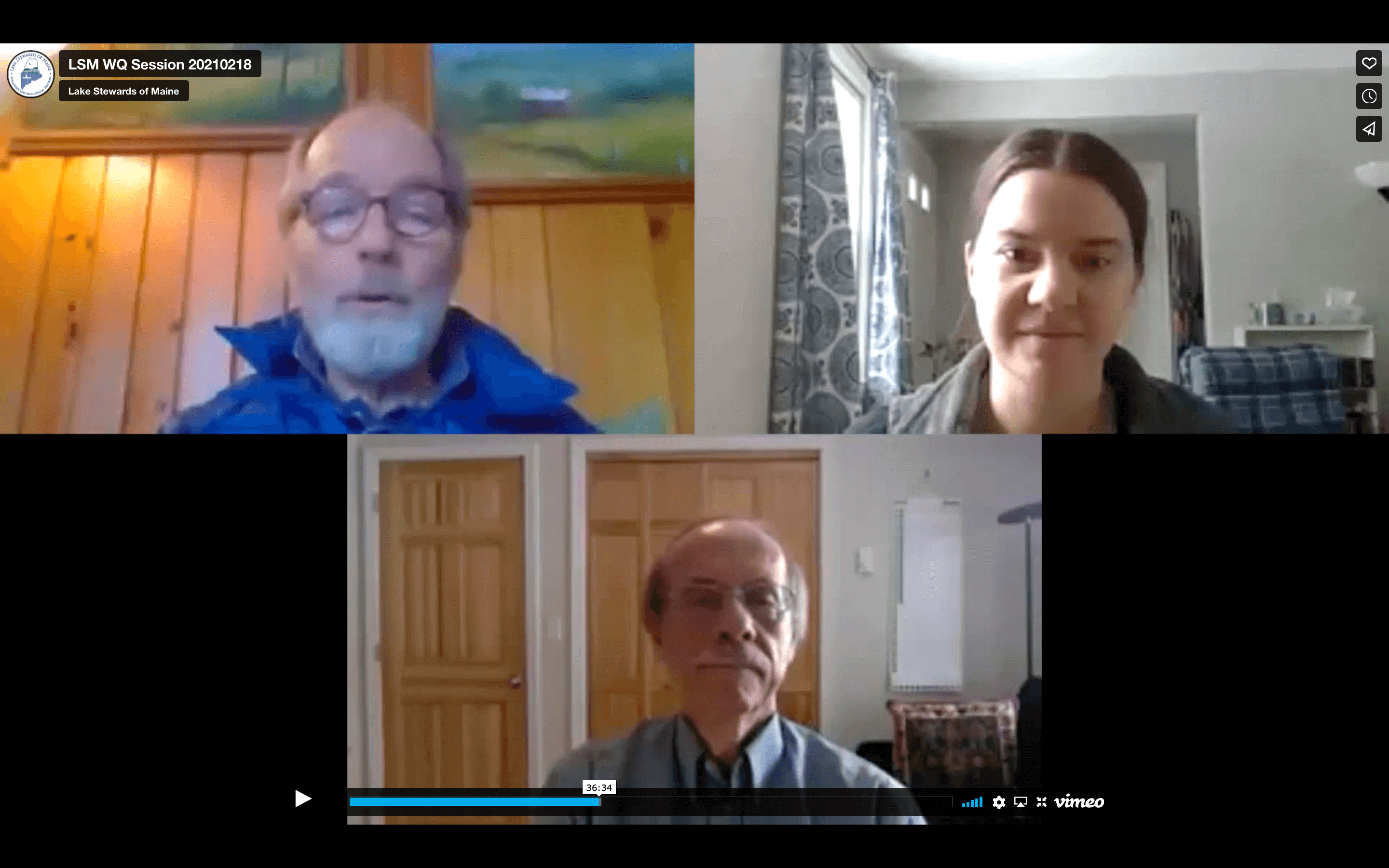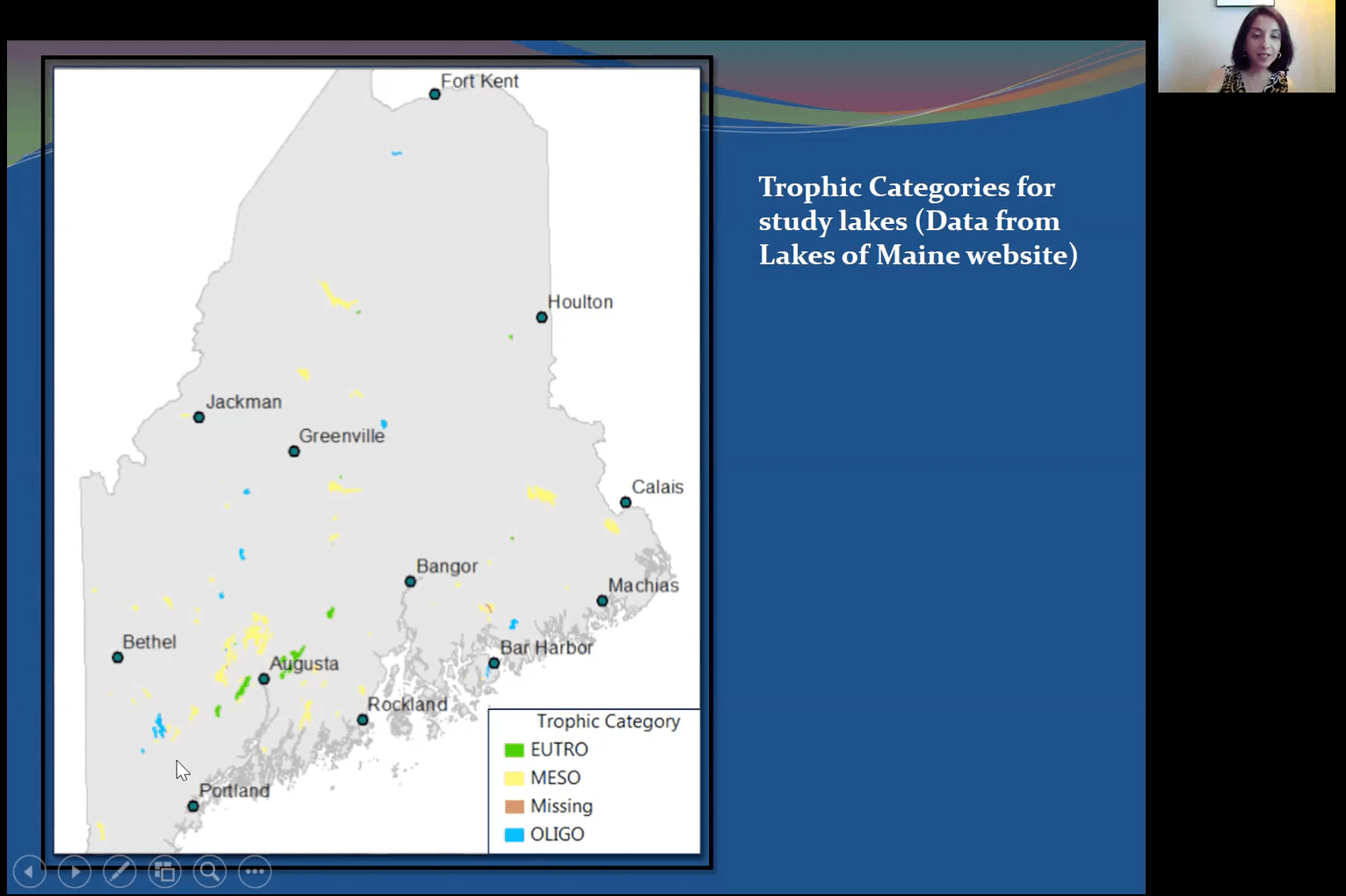Watershed Assessment

Quick Links
LSM Programs & Tools
Latest News from LSM
Forms & Data Sheets
A watershed is defined as an area of land that drains to a common water body. Depending on the scale of the watershed you are looking at this could be a small brook, a stream, a large river, or, for our purposes at LSM, a lake. Because the health of a lake is heavily influenced by the geologic makeup, land use activities, and level of development that takes place in that lake’s watershed, it is a critical aspect to understand for stewardship activities.
To help address issues taking place in the watershed, LSM offers several trainings and provides educational resources.
For more information about watersheds, please look at our watershed FAQs document. It can be found HERE.
LSM offers watershed assessment trainings annually in conjunction with Maine DEP staff. More information pertaining to these trainings can be found HERE.
LSM in conjunction with Maine Lakes offers a Small Watershed Grant. Information and application can be found HERE.
Additional Resources:
- Information compiled by the Maine Dept. of Environmental Protection related to watersheds, including general information, best management practices, example projects, and funding opportunities. This is a Maine specific resource. https://www.maine.gov/dep/land/watershed/materials.html
- Compilation of all the watersheds in Maine, providing history and contact information for local organizations. This is operated by the Maine Rivers non-profit organization. This is a Maine specific resource. https://mainerivers.org/watershed-profiles/
- Summary information about watersheds composed by the Maine Dept. of Environmental Protection (DEP). It also includes an explanation of the DEP’s involvement with the community and the related projects. This is a Maine specific resource. https://www.maine.gov/dep/land/watershed/index.html
- One of the most well known best management practices at the residential scale, rain gardens reduce runoff on a property, thereby protecting watershed water quality. The article explains the different types of pollutant removal mechanisms and the pollutants removed. The design blueprints, steps, and suggested plant lists to build a rain garden are provided. This is a Maine specific resource. https://extension.umaine.edu/publications/2702e/
- LakeSmart is an education and outreach program that rewards lakefront homeowners who manage their land to protect water quality. The program is free, non-regulatory, and voluntary. Participating homeowners receive individualized suggestions for keeping pollutants from stormwater out of lake waters. LakeSmart is operated by the Maine Lakes non-profit organization. This is a Maine specific resource. https://www.lakes.me/lakesmart
- List of resources and examples compiled by the US Environmental Protection Agency. These recommended case studies and practices employed have a documented reduction to runoff in watersheds. https://www.epa.gov/soakuptherain/soak-rain-whats-problem
- NALMS is a national organization of lake professionals, academics, associations, and volunteers. The link provides a general overview of proper planning for lake and watershed management. https://www.nalms.org/home/lake-management-planning/
- Short video by the American Society of Landscape Architects explaining how watershed management ties closely to environmental policies. https://vimeo.com/269112792
- Information compiled by the US Environmental Protection Agency related to watersheds, including general information, best management practices, example projects, and funding opportunities. https://www.epa.gov/hwp
- Overview, created by US National Oceanic and Atmospheric Administration of what defines a watershed and the properties that make watersheds vulnerable to pollution. https://www.noaa.gov/education/resource-collections/freshwater/watersheds-flooding-and-pollution
- Synopsis of what a watershed is and its properties in a landscape; created by US Geological Survey. https://www.usgs.gov/special-topics/water-science-school/science/watersheds-and-drainage-basins
- Summary of the defining characteristics of a watershed with links to related material; created by the US National Parks Service. https://www.nps.gov/subjects/oceans/wetland-watershed.htm
- Short article defining a watershed by the US National Oceanic and Atmospheric Administration. https://oceanservice.noaa.gov/facts/watershed.html
Related Information

Water Quality Technical Support Session: A Discussion of Flushing Rates
Water Quality Technical Support Session: A Discussion of Flushing Rates https://vimeo.com/manage/videos/525697766/679f9e7db7 Quick Links A technical discussion with LSM WQ monitors, primarily focused upon the phenomena of watershed flushing.

Understanding Water Quality Indicators
Understanding Water Quality Indicators Quick Links Transparency, Polluted Stormwater Runnoff, and Algae There are many imminent threats to Maine lakes. Near the top of the list, and perhaps the most pervasive, is the potential for

LSM Water Quality Technical Session 20210218 – A Discussion of Citizen Lake Watershed Surveys
LSM Water Quality Technical Session 20210218 – A Discussion of Citizen Lake Watershed Surveys https://vimeo.com/manage/videos/525539411/2b7bab27a5 Quick Links Lake Stewards of Maine Water Quality Session, February 18th, 2021 Citizen Lake Watershed Surveys

An Overview of Citizen Lake Watershed Surveys
An Overview of Citizen Lake Watershed Surveys https://vimeo.com/manage/videos/441136859 Quick Links Amanda Pratt, Environmental Specialist, Maine DEP Watershed Management Unit An overview of how to plan and conduct a volunteer lake watershed survey to identify sources

Volunteer
Volunteer Quick Links Training and certification are central to the work we perform here at Lake Stewards of Maine. All volunteer water quality monitors and invasive plant patrollers must go through certification in order for

LSM Citizen Stewards and Maine Lakes: Collaborative Approaches for Sustainable Systems
LSM Citizen Stewards and Maine Lakes: Collaborative Approaches for Sustainable Systems https://vimeo.com/manage/videos/433709426 Quick Links Presented by Firooza Pavri, PhD Freshwater resources provide vital societal and ecosystem services. Keeping our lakes and ponds healthy for future
